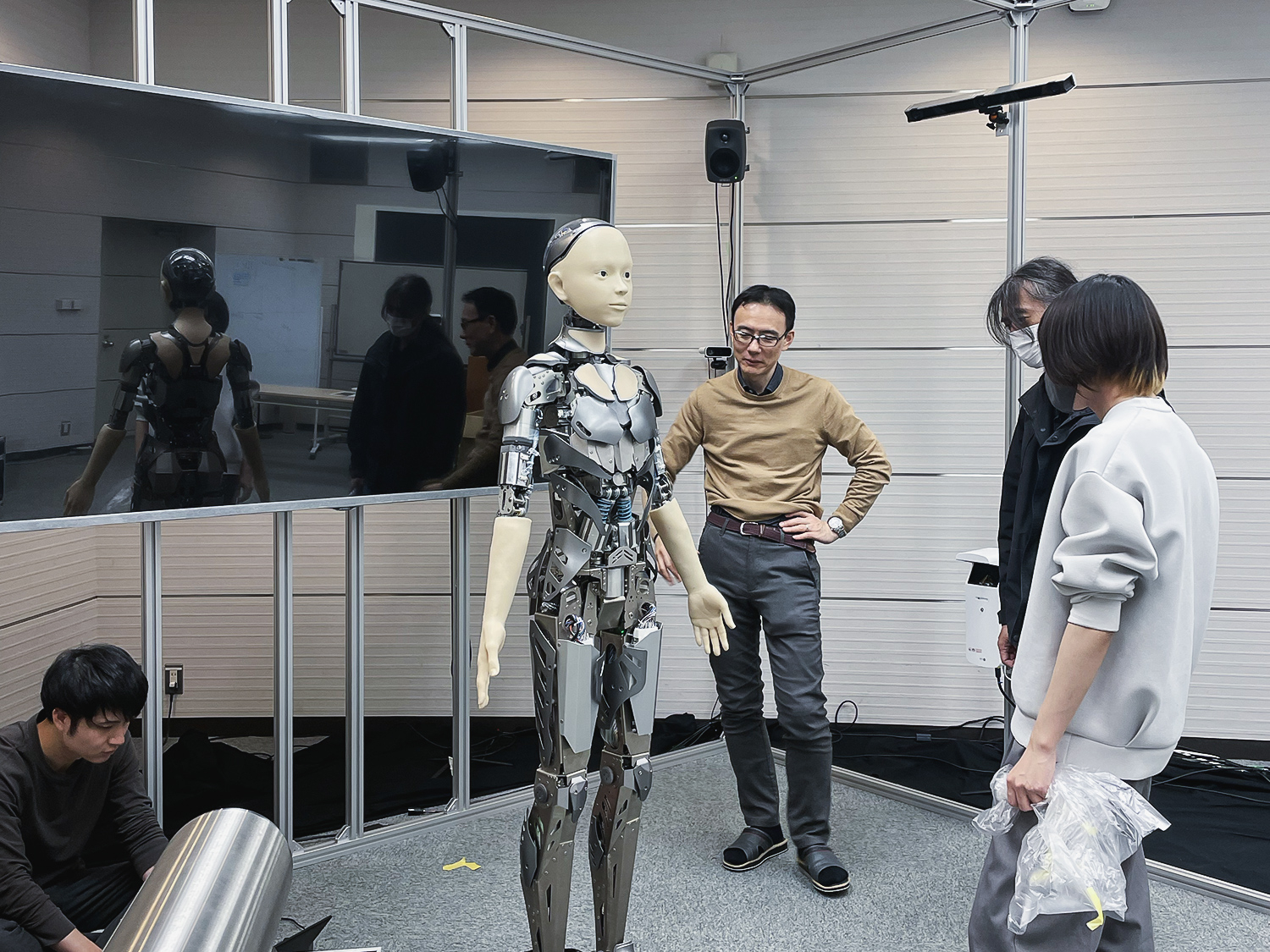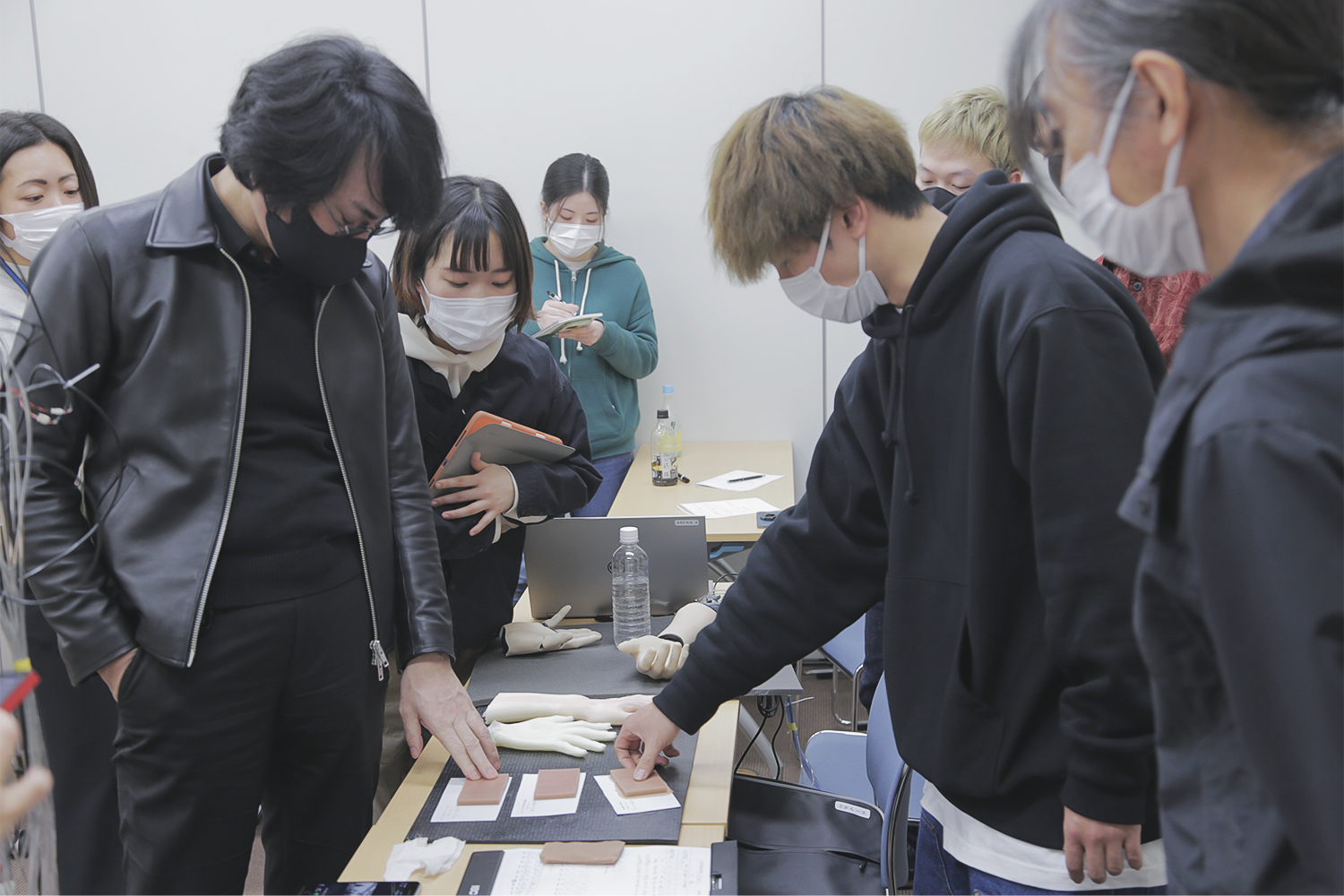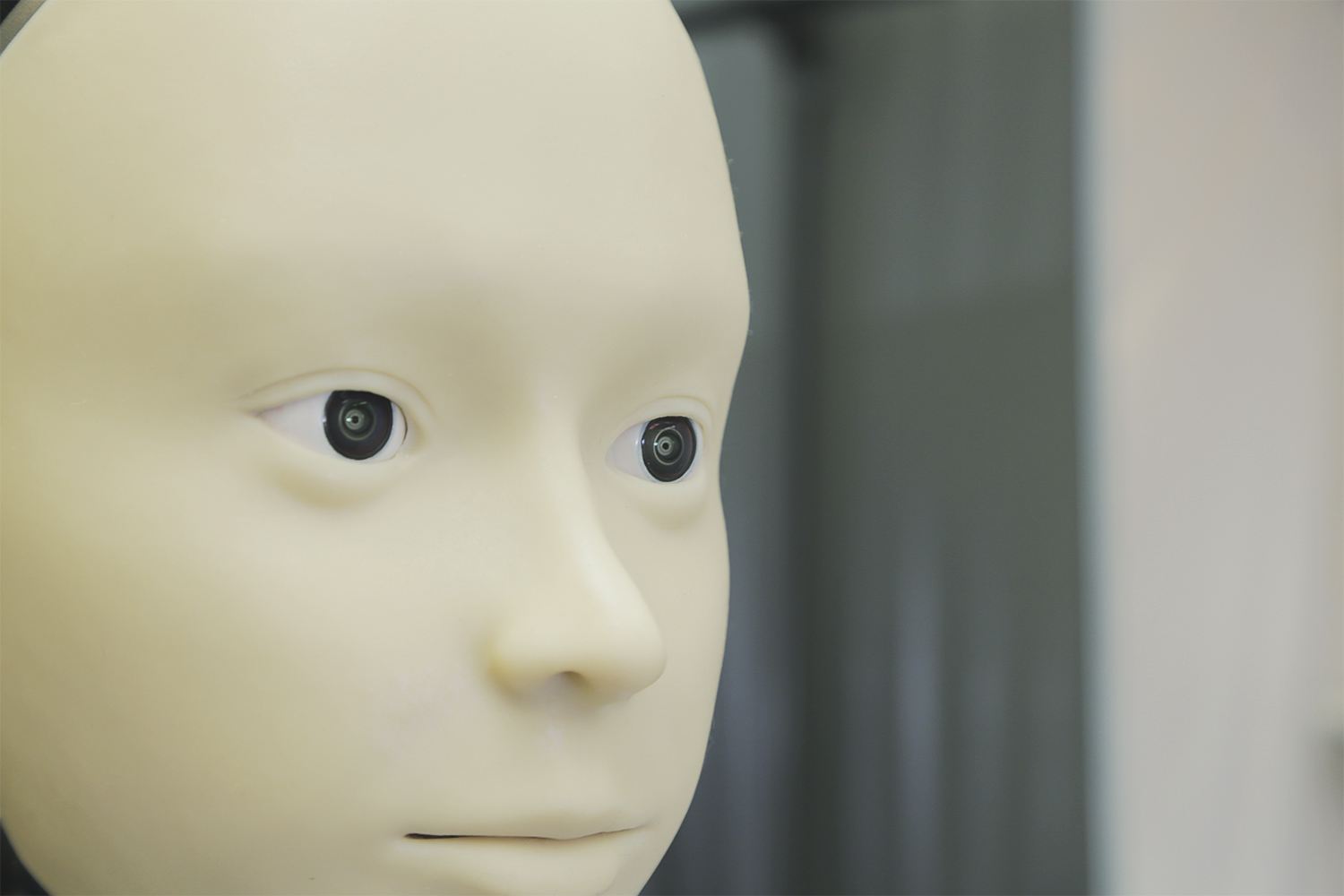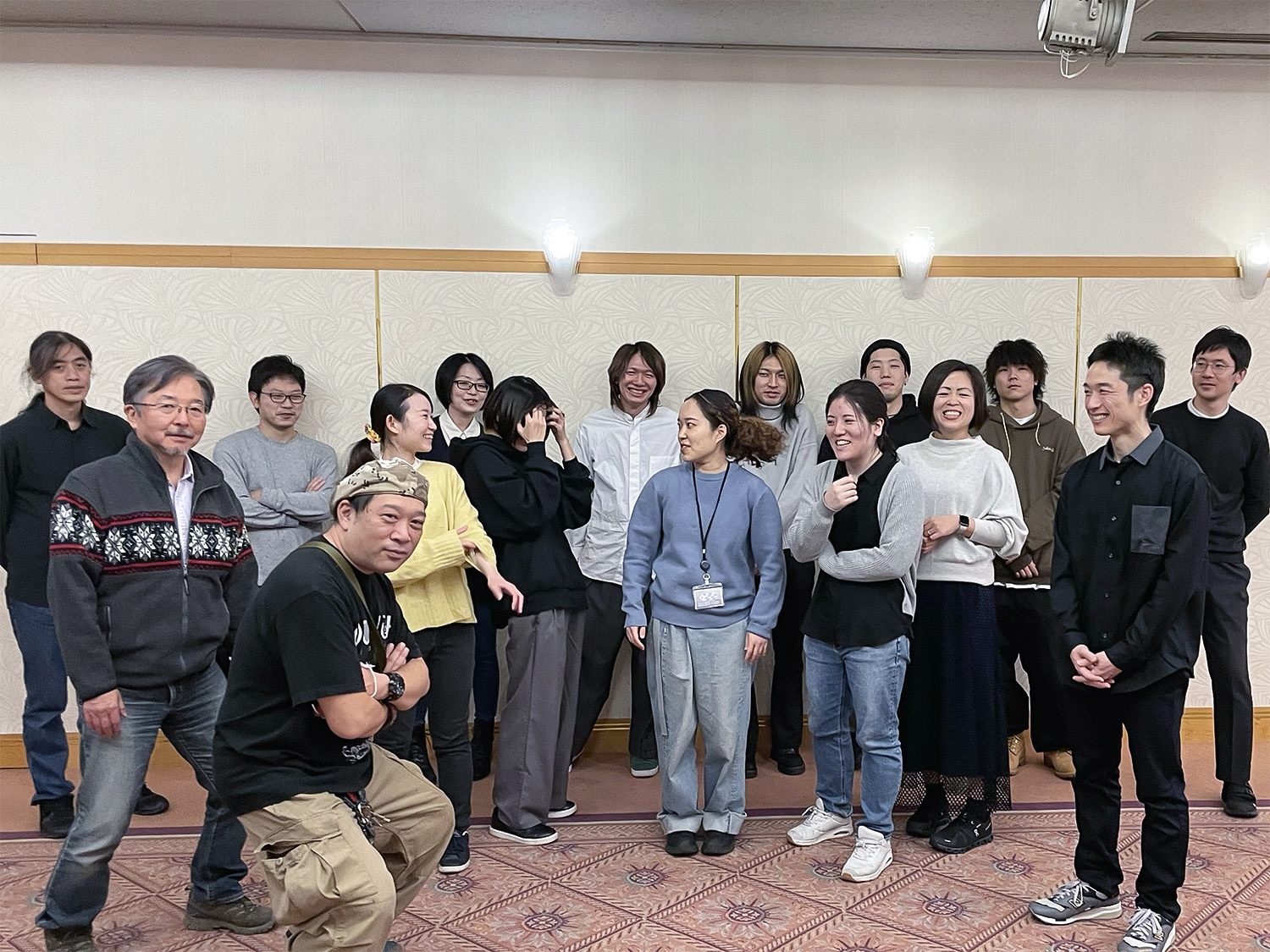[Secrets of Development #4: Android Development] Leveraging team diversity in the creation of human-like androids
In the signature pavilion, “Future of Life,” visitors will discover a variety of robots and androids envisioned for the present, 50 years from now, and 1000 years from now. The development of these androids is undertaken by the diverse staff of A-Lab Co., Ltd. (hereafter referred to as A-Lab), a company engaged in the development, manufacture, sales, and operational support of androids. This time, we spoke with HIROSHIMA Mai, Brand Manager at A-Lab, who oversees the entire development process of the project. We asked her about the challenges of developing androids for the Future of Life signature pavilion.

Many firsts in the creation of original androids for the Expo 2025 Osaka, Kansai, Japan
A-Lab, which has collaborated with thematic project producer ISHIGURO Hiroshi to create astounding androids such as Matsuko-Roid and Soseki Android, was approached by Ishiguro several years ago with a significant request: “Get ready to create a mountain of androids for the Expo.”
“He was not exaggerating: now we are striving to create an unprecedented number of androids,” they explain.
Up until recently, they were producing approximately one android every six months, but now they aim to complete about 20 androids in about two years for the Expo, which is quite a change of pace. Hiroshima goes on to explain that not just the quantity but also the nature of this project differs from previous android developments.
“In the past, we mostly created androids based on specific person as a model. However, we have no models for the androids we are creating now, and these androids are intended to be universally accepted, regardless of race or skin color—this is a first for us.”
They are carefully considering skin tones that are not too white, not too black, but not Asian either, and not specifically representative of any particular ethnicity, nationality, or gender. The androids are to have a gender-neutral appearance, with soft forms that will be universally accepted. While exploring the right balance for the diverse races, nationalities, and values of the people who will visit the Expo, A-Lab is forging forth with the creation of these androids. As they tackle the challenge of creating androids differing in both quantity and content from before, they are under pressure, but at the same time, there’s a positive atmosphere in the company, according to Hiroshima.
“Of course, being part of such a major project as the Expo is exciting in itself. But more than that, we are thrilled to have this precious opportunity to give concrete form to the vision that Prof. Ishiguro has been weaving for a long time—how androids will unfold in future societies, and how they, along with technology, will expand the possibilities of human life.”

Creating new androids with digital precision and the expressiveness of manual work
Hiroshima notes that not only the staff who have been working with Ishiguro on android creation for many years, herself included, but also the new employees who have recently joined the company, are highly motivated. In the past few years, the company has hired three or four people, bringing the total number of employees to seventeen. A key factor in aligning the entire staff in the same direction was direct interaction with the Ishiguro team.
“The staff of A-Lab have had several opportunities to meet and have discussions with Prof. Ishiguro and collaborating members. Even our newest staff members have had the chance to hear directly from Prof. Ishiguro about what he wants to convey through the pavilion, and this has helped us all share the same vision. When Prof. Ishiguro said, ‘In the end, all humans become stars,’ it was such an unexpected concept, and we listened intently, eager to learn more. Our motivation was further boosted by the professor and other collaborating members telling us that we are the ones who will create the androids that will be the main attraction in the pavilion, which will attract attention from all over the world.”

Looking ahead to the Expo project, A-Lab has hired new staff with diverse backgrounds, including people who have studied special-effects makeup and stage design, people who have been involved in prosthetic limb creation, and people experienced in art-related production activities. Although some of the new hires had no prior experience in the android world, they were eager to take on new challenges.
“I feel that our workplace has become more diverse with the addition of these new staff members. In this project, in line with Prof. Ishiguro’s intentions, we aim to endow the androids with more human-like and rich expressions than ever before. In this process, the opinions and skills of staff with diverse experiences are proving to be beneficial.”
In this project, where they meticulously adjust each blink, mouth movement, and facial expression of the androids in pursuit of a human-like appearance, they are also experimenting with incorporating digital modeling of external elements such as the skin, face, and hands, which were previously crafted by hand.
“Previously, we used to create molds manually using clay, but now that we have shifted to computer graphics, the accuracy and work efficiency of reproducing the same modeling has increased. However, there are still aspects, such as fine-tuning the androids’ human-like expressions, where human craftsmanship excels. Therefore, we are currently proceeding by combining the precision of digital methods with the expressiveness of manual craftsmanship.”
A-Lab is also tackling other challenges. They are attempting to change the drive mechanism in some of the androids from traditional pneumatic drives to motor-driven operation.
“A-Lab typically uses pneumatic drives for its androids, which has benefits in terms of durability and ease of maintenance, and thus we plan to utilize this system in many androids for the long-term exhibition at the Expo. However, for some androids where we want to focus more on facial expressions, we will use motor drives, which allow for precise and agile movements. Realizing Prof. Ishiguro’s concept that ‘human-likeness resides in the eyes,’ it is necessary to move the eyes quickly, making motor drives the optimal choice. However, these drives have the drawback of being more prone to breakdowns. We are redoubling efforts to overcome this drawback.”

Eyes sparkling with the joy of monozukuri despite unprecedented challenges
The Expo project, involving the production of androids without actual models, the introduction of digital modeling, and the use of motor drives, involves new challenges spanning various areas. One might wonder if this has led to confusion within A-Lab.
“Of course, it is challenging, but when we are involved in development that requires taking on new challenges, the staff’s eyes sparkle with excitement. As we consider for example which color to use for the skin of an android, and whether to try out new materials, we all relish this fresh opportunity to freely experiment. Indeed, we love monozukuri (making things). I feel that the Expo project has revitalized communication within the company and increased our sense of unity more than ever before” says Hiroshima, her eyes sparkling with excitement.
Please look forward to the new androids developed by A-Lab as it keeps on taking on new challenges.
